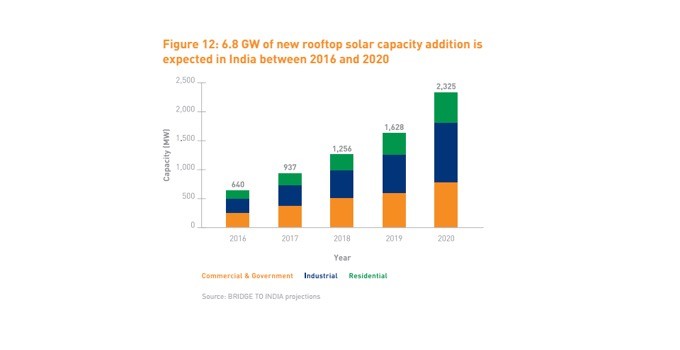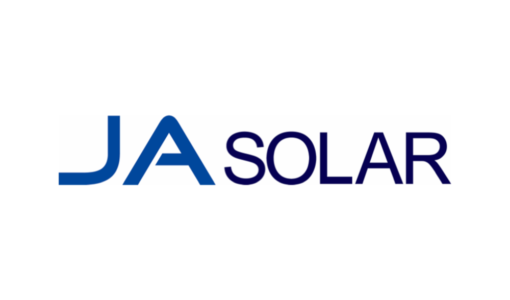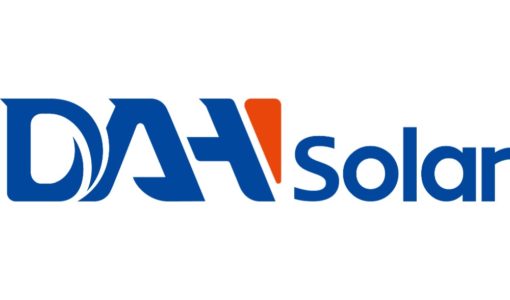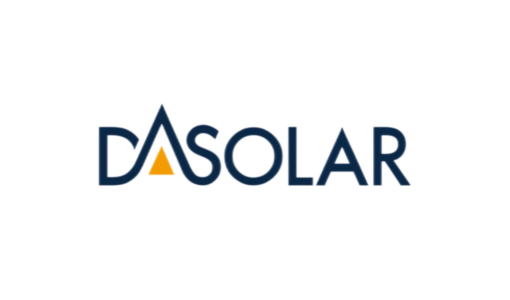- The 'India Solar Handbook 2016' by Bridge to India says the country will fall short of its target of 12 GW of new capacity addition in 2016-17 and install only 5.4 GW
- Includes Indian Solar CEO Survey for the first time; Companies say 100 GW too ambitious a target
- The survey results point out that SECI does not enjoy bankability as the real offtaker among solar companies
- Rooftop solar needs better look as the government seems too focussed on large scale solar power development, ignoring distributed generation
- Manufacturing will see better days but an integrated module production line will not be a possibility by 2022
- Non-availability of easy access to finance along with grid stability issues major concerns
The Indian solar market may just add 5.4 GW of new solar power capacity in the current financial year, as against the 12 GW target set by the Indian government. While consultancy Bridge to India’s forecast means more solar for the country than the 3 GW installed last fiscal year, it is even a little less than an estimate of another consultancy, ICRA, which predicts India to grow by 5.7 GW in 2016-17 (see ICRA estimates 5.7 GW of solar by 2017 in India).
The reasons for Bridge to India’s conservative predictions are given in the newly published annual edition of its India Solar Handbook 2016. It is about the difficulty to access adequate financing, which slows down the pace of growth for the Indian solar market in 2017 and 2018. With tariffs being bid at very aggressive levels, reaching 4.34 INR to 5 INR per kWh ($0.07 to $0.08), banks are apparently wary of lending to projects at such low tariffs. The handbook reads, “Ensuring grid robustness and investment/lending appetite at aggressive tariff levels will be the two main challenges.”
Surveyed CEOs don’t believe in 100 GW target
For the first time, the report also includes an India Solar CEO Survey which covered responses from 27 project developers, EPC contractors and equipment manufacturers, both national and international. Even these top executives feel India’s target of 100 GW of solar power capacity by 2022 is ‘too ambitious’ with the sector facing challenges of stability and financing. They rather think that India will have an installed solar power capacity of 57 GW in 2022, which would be a factor 10 compared to the total power installed by March (see Indian solar touches 5.7 GW), but only 57% of the government’s goal.
Bankability issue with DISCOMs
Though the Solar Energy Corporation of India (SECI) has been set up to facilitate the development of solar projects, the CEOs surveyed expressed their doubts about its bankability as an offtaker, unless it is adequately capitalized in the absence of the distribution network companies (DISCOMs), which turn out to be the ultimate offtakers. The consultancy said, “On the macro front, the industry is largely optimistic about the UDAY reform for DISCOM finances and thinks that it will help improve the DISCOM bankability issues. However, there is still some scepticism, which is not surprising given the failure of previous moves to restructure DISCOM finances.”
More focus needed on rooftop solar
As of March 31, 2016, the solar rooftop capacity stood at 740 MW, a far cry from its ultimate goal of 40 GW just six years from now. The CEOs believe that the maximum addition in this category will be only 10 to 11 GW by 2022, owing to an ineffective net metering policy framework and lack of more attractive debt financing solutions. They tag it an ‘alarm call’ for the government and policy makers, who have been too focused on large scale solar power. On top, they have’t even started extracting the power of distributed generation.
However, Bridge to India forecasts 6.8 GW of new rooftop capacity addition between 2016 and 2020, with the current financial year adding 640 MW. It said, “This market needs more focused policy support to ensure effective net-metering implementation and attraction of financial investors.”

Bridge to India believes only a small part of Indian installations will be rooftop systems by 2020. The number is dramatically smaller than the 40 GW target of SECI, even if this is set for 2022.
Positive on manufacturing but not full integration
As the Indian government is backing the domestic solar manufacturing industry against the WTO, companies currently operating in India are quite positive about its prospects. The CEOs surveyed expect the country to have an annual cell-module manufacturing capacity of 5 GW by 2022. Nevertheless, they were almost unanimous in their view of India not having a fully integrated module manufacturing line (polysilicon-wafer-cell-modules) by the targeted year.
Utility Solar at 37 GW by 2020
The consultancy puts the maximum cumulative utility scale capacity addition in India until 2020 at 37 GW, with the main support coming from state policies, followed by systems installed under the National Solar Mission (NSM). That over 30 GW to go. A total of 6.6 GW of utility scale additions was installed as of March 31, 2016; the state of Rajasthan topped the ranks at 1,291 MW.

Bridge to India estimates that utility scale capacity will grow to 37 GW by 2020, with the main support coming from state policies, followed by systems installed under the National Solar Mission (NSM).
The Ministry of New and Renewable Energy (MNRE) has approved 33 solar parks in 21 states with a combined capacity of 19.9 GW.
Growing role of international project developers
Over 9 GW of solar project tenders have been released as of April 2016, according to Bridge to India and more than 10 MW were commissioned as of March 31, 2016. Out of the 10 MW, 42% were commissioned by Indian corporates, 27% were backed by private equity, 13% by international project developers, 9% by international utilities and public sector developers each. Almost at the same level, over 10 MW of projects under development. This, points out Bridge to India, is reflective of the growing role of international developers and utilities in the Indian solar market.
Among the top 10 private project developers in India, SunEdison holds the maximum pipeline with SoftBank and SkyPower at the last two positions. No wonder many companies were rumored to take over the projects of struggling US company SunEdison (see New Rumors About SunEdison’s India Assets)
To download the India Solar Handbook 2016, go to Bridge to India’s Website













